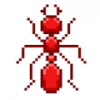To get started this colony has done something amazing. They are actually killing off the Tetramorium sp. E in my backyard! Anyway, the colony was actually was put in my yard by me. I got them from one of the GAN farmers along with another colony. I didn't know what to do with them so I let them loose in my yard. When I released them they had 100+ workers and 5 queens. However they are probably at 100+ queens now (This is an estimate i could be completely wrong about the number of queens) and they are easily over 200,000 workers. I wouldn't care about these ants normally. However, they are killing off all of the other species in my yard. I know they've killed off 2-3 mature Formica colonies a large Crematogaster colony and a Camponotus pennsylvanicus. colony. The Tetramorium colony was at about 10,000 workers when I released the Tapinoma colony. Now they are probably under 1,000. I'm not sure if I should try to kill the Tapinoma or not because they are native. i expect this colony to grow much more as they are only 1 year and 4 months old.
I will try to post some pictures/vids later tonight or tomorrow
Edited by Mdrogun, September 1 2015 - 5:08 PM.




















